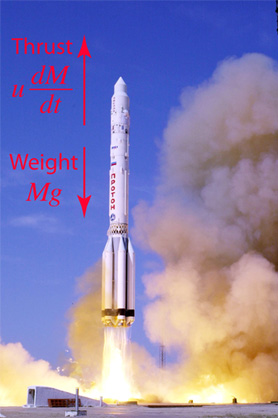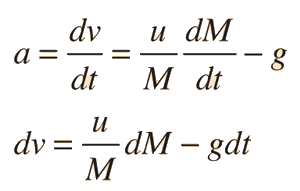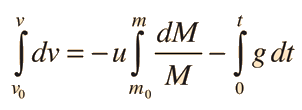Rocket in Space
Under the influence of the rocket thrust in a gravity-free environment , the acceleration is
The above is the standard "rocket in space" scenario where you typically calculate the velocity after a given time of thrusting in terms of the amount of fuel burned and exhausted. If you want a specific expression for velocity in terms of time, that can be developed in terms of the exhaust rate as a function of time. If the burn rate is constant at Δm/Δt then the velocity as an explicit function of time would be

For a variable burn rate, the denominator would become an integral.
|




